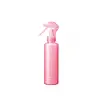What's inside
What's inside
 Key Ingredients
Key Ingredients

No key ingredients
 Benefits
Benefits

 Concerns
Concerns

 Ingredients Side-by-side
Ingredients Side-by-side

Water
Skin ConditioningDimethicone
EmollientCetearyl Alcohol
EmollientNeopentyl Glycol Diethylhexanoate
EmollientIsopentyldiol
HumectantGlycine Soja Sterols
EmollientDihydroxymethylsilylpropoxy Hydroxypropyl Hydrolyzed Casein
Skin ConditioningIsodecyl Neopentanoate
EmollientPEG-12 Dimethicone
Skin ConditioningMaltitol
HumectantArginine
MaskingGlycine
BufferingAspartic Acid
MaskingSerine
MaskingThreonine
Valine
MaskingAlanine
MaskingProline
Skin ConditioningPhenylalanine
MaskingIsoleucine
Skin ConditioningHistidine
HumectantPCA
HumectantSodium PCA
HumectantSodium Lactate
BufferingSorbitol
HumectantPPG-10 Methyl Glucose Ether
Skin ConditioningPhenyl Trimethicone
Skin ConditioningBehentrimonium Methosulfate
Butylene Glycol
HumectantHydroxypropyl Methylcellulose Stearoxy Ether
Glyceryl Stearate
EmollientCetrimonium Chloride
AntimicrobialCitric Acid
BufferingDisodium EDTA
Phenoxyethanol
PreservativeWater, Dimethicone, Cetearyl Alcohol, Neopentyl Glycol Diethylhexanoate, Isopentyldiol, Glycine Soja Sterols, Dihydroxymethylsilylpropoxy Hydroxypropyl Hydrolyzed Casein, Isodecyl Neopentanoate, PEG-12 Dimethicone, Maltitol, Arginine, Glycine, Aspartic Acid, Serine, Threonine, Valine, Alanine, Proline, Phenylalanine, Isoleucine, Histidine, PCA, Sodium PCA, Sodium Lactate, Sorbitol, PPG-10 Methyl Glucose Ether, Phenyl Trimethicone, Behentrimonium Methosulfate, Butylene Glycol, Hydroxypropyl Methylcellulose Stearoxy Ether, Glyceryl Stearate, Cetrimonium Chloride, Citric Acid, Disodium EDTA, Phenoxyethanol
Water
Skin ConditioningAlcohol
AntimicrobialAmodimethicone
Glycerin
HumectantPhenoxyethanol
PreservativeCetrimonium Chloride
AntimicrobialDimethicone
EmollientSodium Citrate
BufferingDicocodimonium Chloride
EmulsifyingCitric Acid
BufferingSteartrimonium Chloride
PreservativePEG-200 Hydrogenated Castor Oil
EmulsifyingHydrolyzed Hyaluronic Acid
HumectantCreatine
Skin ConditioningCetearamidoethyl Diethonium Hydrolyzed Rice Protein
Sodium Dilauramidoglutamide Lysine
HumectantPropanediol
SolventDistearyldimonium Chloride
Behentrimonium Chloride
PreservativeGamma-Docosalactone
Skin ConditioningPhytosterols
Skin ConditioningCeteth-20
CleansingIsopropyl Alcohol
SolventWater, Alcohol, Amodimethicone, Glycerin, Phenoxyethanol, Cetrimonium Chloride, Dimethicone, Sodium Citrate, Dicocodimonium Chloride, Citric Acid, Steartrimonium Chloride, PEG-200 Hydrogenated Castor Oil, Hydrolyzed Hyaluronic Acid, Creatine, Cetearamidoethyl Diethonium Hydrolyzed Rice Protein, Sodium Dilauramidoglutamide Lysine, Propanediol, Distearyldimonium Chloride, Behentrimonium Chloride, Gamma-Docosalactone, Phytosterols, Ceteth-20, Isopropyl Alcohol
 Reviews
Reviews

Ingredients Explained
These ingredients are found in both products.
Ingredients higher up in an ingredient list are typically present in a larger amount.
This ingredient is a preservative, antimicrobial, and emulsifier. It is often used in cosmetics for its ability to cleanse, condition, and reduce static.
Cetrimonium chloride is a quaternary ammonium salt, meaning it has a water-soluble structure.
Citric Acid is an alpha hydroxy acid (AHA) naturally found in citrus fruits like oranges, lemons, and limes.
Like other AHAs, citric acid can exfoliate skin by breaking down the bonds that hold dead skin cells together. This helps reveal smoother and brighter skin underneath.
However, this exfoliating effect only happens at high concentrations (20%) which can be hard to find in cosmetic products.
Due to this, citric acid is usually included in small amounts as a pH adjuster. This helps keep products slightly more acidic and compatible with skin's natural pH.
In skincare formulas, citric acid can:
While it can provide some skin benefits, research shows lactic acid and glycolic acid are generally more effective and less irritating exfoliants.
Most citric acid used in skincare today is made by fermenting sugars (usually from molasses). This synthetic version is identical to the natural citrus form but easier to stabilize and use in formulations.
Read more about some other popular AHA's here:
Learn more about Citric AcidDimethicone is a type of synthetic silicone created from natural materials such as quartz.
What it does:
Dimethicone comes in different viscosities:
Depending on the viscosity, dimethicone has different properties.
Ingredients lists don't always show which type is used, so we recommend reaching out to the brand if you have questions about the viscosity.
This ingredient is unlikely to cause irritation because it does not get absorbed into skin. However, people with silicone allergies should be careful about using this ingredient.
Note: Dimethicone may contribute to pilling. This is because it is not oil or water soluble, so pilling may occur when layered with products. When mixed with heavy oils in a formula, the outcome is also quite greasy.
Learn more about DimethiconePhenoxyethanol is a preservative that has germicide, antimicrobial, and aromatic properties. Studies show that phenoxyethanol can prevent microbial growth. By itself, it has a scent that is similar to that of a rose.
It's often used in formulations along with Caprylyl Glycol to preserve the shelf life of products.
Water. It's the most common cosmetic ingredient of all. You'll usually see it at the top of ingredient lists, meaning that it makes up the largest part of the product.
So why is it so popular? Water most often acts as a solvent - this means that it helps dissolve other ingredients into the formulation.
You'll also recognize water as that liquid we all need to stay alive. If you see this, drink a glass of water. Stay hydrated!
Learn more about Water